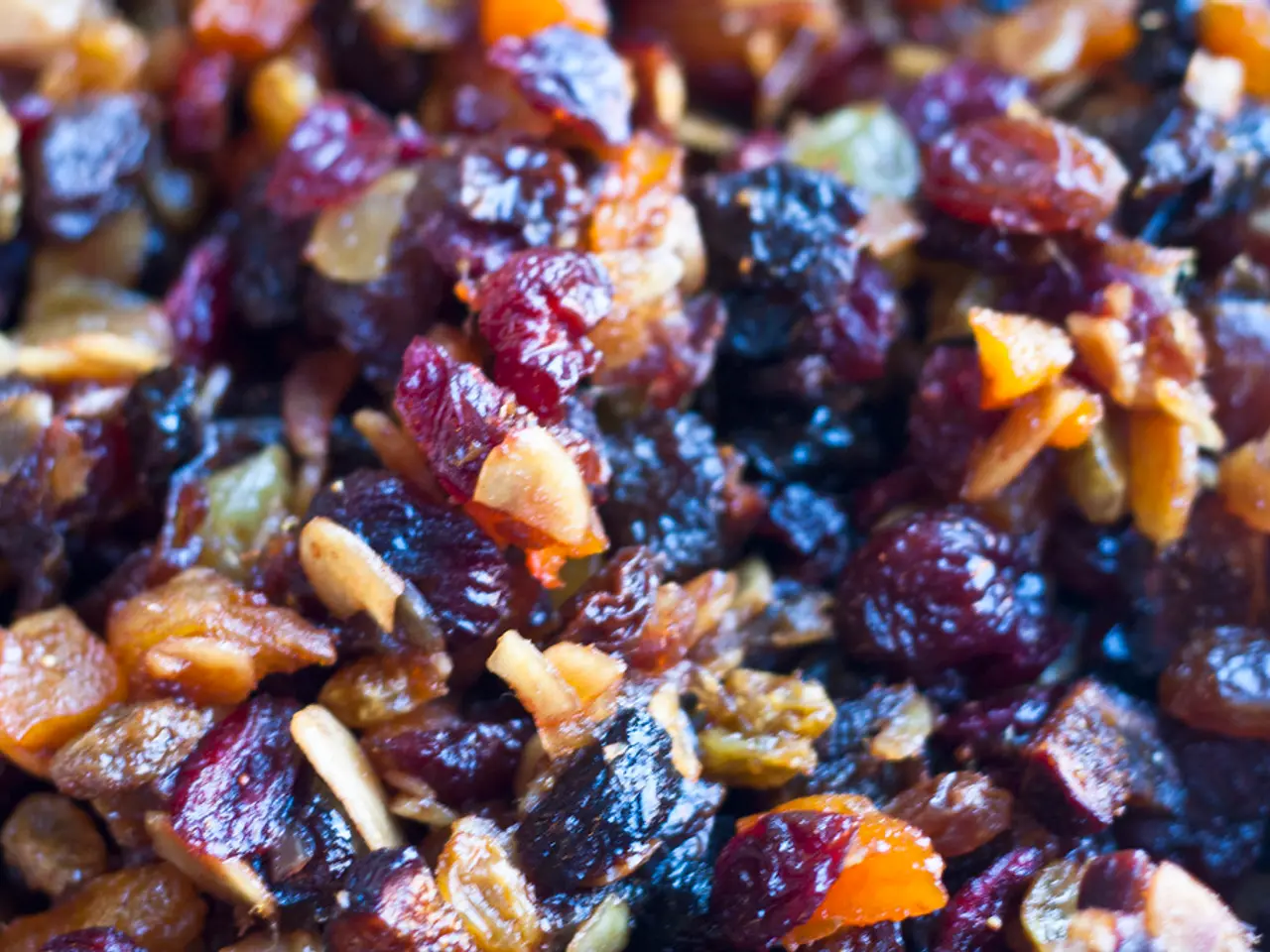Expanding the Horizons of Soybeans: Discovering Their Vast Capabilities Beyond Soy Sauce and Tofu
Discovering the Versatility of Soy-Based Ingredients: Yuba, Tempeh, Natto, and Okara
Soy-based ingredients have been a staple in many cuisines for centuries, offering a wide range of textures and flavors that can elevate dishes to new heights. Four such ingredients, Yuba (Tofu Skin), Tempeh, Natto, and Okara (Soy Pulp), are particularly noteworthy for their culinary versatility.
Yuba (Tofu Skin)
Yuba forms as a thin film on the surface of heated soy milk and is carefully lifted off and dried into sheets. It can be rehydrated, stir-fried, simmered in soups, or used as wraps for fillings, making it a popular ingredient in Asian cuisines.
Tempeh
Tempeh is a fermented soy product made by cooking soybeans and binding them together into a firm cake. The fermentation process adds a nutty flavor and improves digestibility. It can be sliced, cubed, steamed, pan-fried, grilled, or baked to develop a crispy outside and serve as a meat substitute.
Natto
Natto is fermented whole soybeans with a sticky, stringy texture and strong flavor. It is traditionally eaten as a breakfast food in Japan, served over rice with condiments like karashi mustard, soy sauce, and green onions.
Okara (Soy Pulp)
Okara is the insoluble pulp leftover after soy milk production. It is high in fiber and protein and can be sautéed, stir-fried, incorporated into baked goods, veggie burgers, or dumplings, dried and ground as a flour substitute, or added to soups and stews for thickness and nutrition.
Each ingredient offers unique texture and flavor profiles and is used in multiple cooking methods like frying, steaming, baking, and fermenting to maximize culinary versatility. The key is understanding their preparation process to unlock appropriate uses.
Tofu, for instance, can be spiced and seasoned in various ways, from spicy to sweet. Fresh yuba has a light, nutty aroma and a very delicate bite, making it suitable for both fresh consumption and cooking. Freshly made tofu tastes nuttier and creamier than store-bought, and softer tofu is better for marinating and simmering in sauces, while firm tofu is good for slicing and frying.
Fermented soy products like miso, tempeh, and soy sauce add umami flavor to food and are high in plant-based protein, healthy fats, minerals, vitamins, and isoflavones. Silken tofu is soft like pudding and can be used to make dressings, dips, fruity sweet creams, vegan chocolate mousse, and Ponzu sauce. Smoked tofu is suitable for heartier dishes.
Opinions on natto are divided, with some people loving it and others not, and this is also the case in Japan. Natto has an intense taste, similar to strong, well-aged cheese. Tempeh has a savory flavor and can be cut into small pieces and fried or deep-fried until crispy.
Through the edible mold, the soybeans grow together, and tempeh becomes chewy. To make natto, soybeans are cooked and then wrapped in rice leaves. The natto is fermented by a bacterium found in the rice leaves, developing a strong smell and taste and forming strings.
To make tofu at home, soy milk needs to be made first by soaking soybeans, blending them with water, cooking, and straining. The soy milk is then mixed with a coagulant, and tofu curds form. Tofu originates from China and is a staple food that can be found in various textures, with firm tofu being common in Europe and softer tofu in Asia.
Elisabeth Fischer, from the "Soja aus Österreich" association, suggests that tofu is bland by design, making it a great canvas for flavors. Claudia Zaltenbach, an author and travel blogger, has written books on tofu, yuba, and okara.
In her book, Elisabeth Fischer has a recipe for mixing natto with apple juice and apple chunks for a milder taste. In Japan, natto is eaten as a side dish and mixed with soy sauce, green onions, and a bit of ginger. Tofu can be used in a variety of dishes, such as dumplings, fillings, veggie burgers, and fried in cubes with soy sauce on potatoes.
These soy-based ingredients open up a culinary universe due to their umami flavor, making them an exciting addition to any kitchen.
In the realm of global cuisines, soy-based ingredients like Yuba, Tempeh, Natto, and Okara offer a rich tapestry of flavors and textures, enhancing food-and-drink preparation in health-and-wellness, fitness-and-exercise, and lifestyle domains. Yuba, or tofu skin, can be rehydrated, stir-fried, simmered in soups, or used as wraps for fillings, contributing to the vibrancy of Asian cooking. Tempeh, a fermented soy product, has a nutty flavor and can be sliced, cubed, steamed, pan-fried, grilled, or baked, making it a versatile alternative in health-and-wellness and fitness-and-exercise routines. Natto, with its strong flavor, is traditionally consumed in Japan for breakfast, often served over rice with condiments. Okara, the pulp remaining after soy milk production, is high in protein and fiber and can be incorporated into a variety of dishes such as baked goods, vegan burgers, dumplings, and soups, extending its culinary utility in health-and-wellness and food-and-drink contexts. Embracing these soy-based ingredients unlocks a world of healthy-cooking possibilities, enriching one's lifestyle and global-cuisines exploration.




